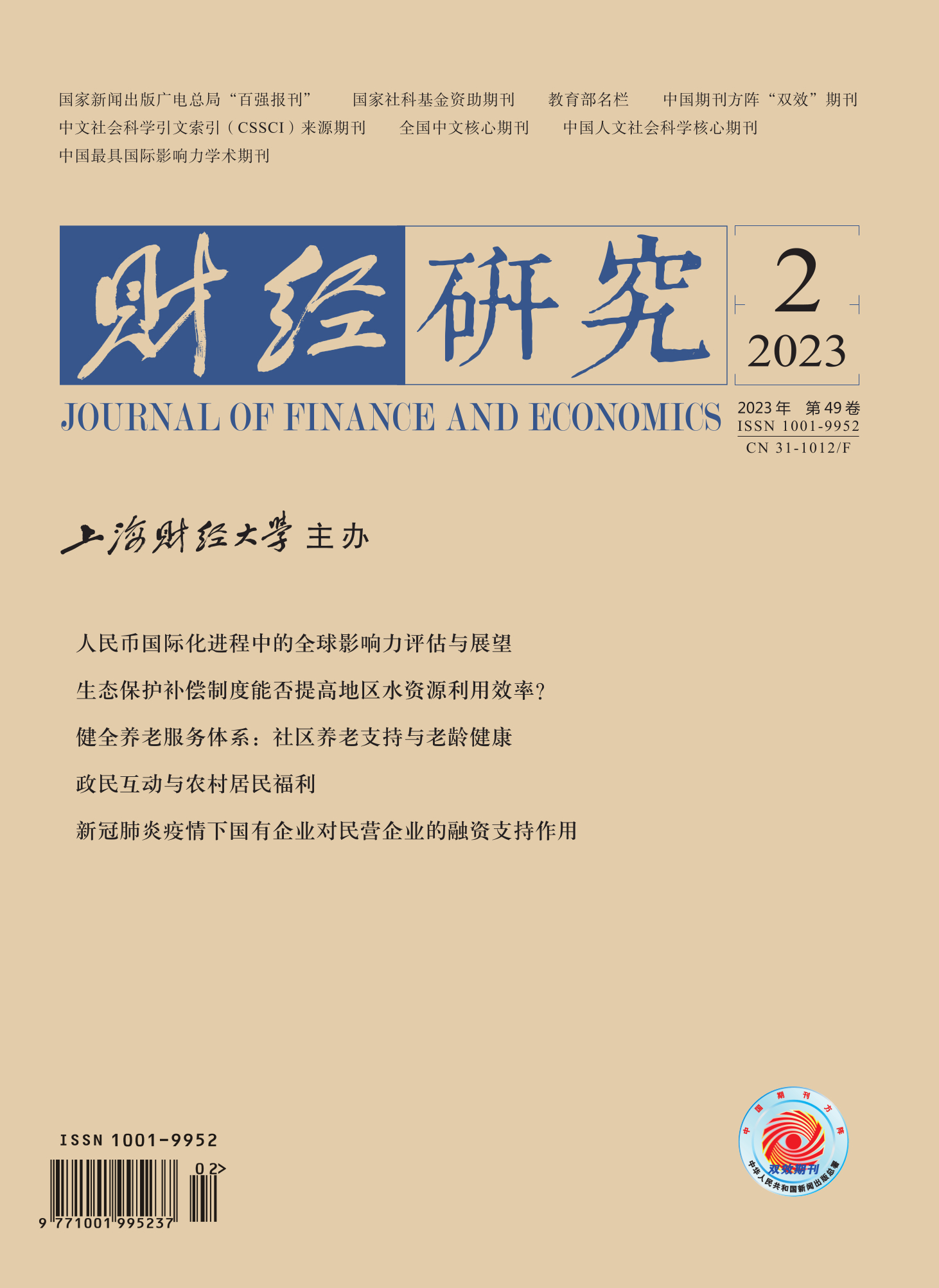我国数字经济产业的迅猛发展有目共睹。文章基于2008—2019年制造业上市公司面板数据,利用企业专利数据识别数字技术创新情况,研究了数字技术创新对企业全要素生产率的影响及其机制。研究发现,拥有数字技术专利的企业全要素生产率显著高于没有数字技术专利的企业,而且数字技术创新规模越大,越有利于制造业企业全要素生产率提升。这表明数字技术创新能够促进制造业企业全要素生产率提升。行业数字化程度越高,数字技术创新越能发挥积极作用。此外,国有制造业企业与西部地区制造业企业的数字技术创新对自身全要素生产率的提升作用更加明显。机制分析发现,短期内数字技术创新会导致企业运营成本上升,阻碍全要素生产率提升;数字技术创新还能通过提高企业创新效率与资源配置效率,促进全要素生产率提升,而缓解劳动要素投入扭曲则是数字技术创新通过缓解企业资源错配发挥作用的主要渠道。
数字技术创新如何驱动制造业企业全要素生产率?——来自上市公司专利数据的证据
摘要
参考文献
1 昌忠泽,孟倩. 信息技术影响产业结构优化升级的中介效应分析−来自中国省级层面的经验证据[J]. 经济理论与经济管理,2018,(6):39−50. DOI:10.3969/j.issn.1000-596X.2018.06.004
3 陈熠辉,蔡庆丰,林海涵. 政府推动型城市化会提升域内企业的创新活动吗?−基于“撤县设区”的实证发现与政策思考[J]. 经济学(季刊),2022,(2):465−484. DOI:10.13821/j.cnki.ceq.2022.02.06
7 李大伟,田何志,吴非. 科技金融、企业数字技术应用与产业结构优化[J]. 金融理论与实践,2021,(7):29−39. DOI:10.3969/j.issn.1003-4625.2021.07.004
11 刘政,姚雨秀,张国胜,等. 企业数字化、专用知识与组织授权[J]. 中国工业经济,2020,(9):156−174. DOI:10.3969/j.issn.1006-480X.2020.09.009
13 米晋宏,江凌文,李正图. 人工智能技术应用推进中国制造业升级研究[J]. 人文杂志,2020,(9):46−55. DOI:10.3969/j.issn.0447-662X.2020.09.006
14 施炳展,冼国明. 要素价格扭曲与中国工业企业出口行为[J]. 中国工业经济,2012,(2):47−56. DOI:10.19581/j.cnki.ciejournal.2012.02.005
15 王桂军,卢潇潇. “一带一路”倡议与中国企业升级[J]. 中国工业经济,2019,(3):43−61. DOI:10.19581/j.cnki.ciejournal.2019.03.025
16 王永进,匡霞,邵文波. 信息化、企业柔性与产能利用率[J]. 世界经济,2017,(1):67−90. DOI:10.19985/j.cnki.cassjwe.2017.01.005
17 伍先福,钟鹏,黄骁. “新基建”提升了战略性新兴产业的技术效率吗[J]. 财经科学,2020,(11):65−80. DOI:10.3969/j.issn.1000-8306.2020.11.006
19 薛成,孟庆玺,何贤杰. 网络基础设施建设与企业技术知识扩散−来自“宽带中国”战略的准自然实验[J]. 财经研究,2020,(4):48−62. DOI:10.16538/j.cnki.jfe.2020.04.004
22 袁淳,肖土盛,耿春晓,等. 数字化转型与企业分工:专业化还是纵向一体化[J]. 中国工业经济,2021,(9):137−155. DOI:10.3969/j.issn.1006-480X.2021.09.008
23 张天华,刘子亮,陈思琪,等. 行政审批中心的资源配置效率研究−基于中国工业企业数据的分析[J]. 财经研究,2019,(9):127−140. DOI:10.16538/j.cnki.jfe.2019.09.010
24 赵宸宇,王文春,李雪松. 数字化转型如何影响企业全要素生产率[J]. 财贸经济,2021,(7):114−129. DOI:10.3969/j.issn.1002-8102.2021.07.008
26 朱勤,孙元,周立勇. 平台赋能、价值共创与企业绩效的关系研究[J]. 科学学研究,2019,(11):2026−2033. DOI:10.16192/j.cnki.1003-2053.2019.11.012
27 Acemoglu D, Restrepo P. The race between man and machine: Implications of technology for growth, factor shares, and employment[J]. American Economic Review,2018,108(6): 1488−1542. DOI:10.1257/aer.20160696
28 Acemoglu D, Restrepo P. Artificial intelligence, automation, and work[A]. Agrawal A, Gans J, Goldfarb A. The economics of artificial intelligence: An agenda[M]. Chicago: University of Chicago Press, 2019.
29 Borowiecki R, Siuta-Tokarska B, Maroń J, et al. Developing digital economy and society in the light of the issue of digital convergence of the markets in the European union countries[J]. Energies,2021,14(9): 2717. DOI:10.3390/en14092717
30 Brynjolfsson E, Hitt L M. Beyond computation: Information technology, organizational transformation and business performance[J]. Journal of Economic Perspectives,2000,14(4): 23−48. DOI:10.1257/jep.14.4.23
31 Cagno E, Neri A, Negri M, et al. The role of digital technologies in operationalizing the circular economy transition: A systematic literature review[J]. Applied Sciences,2021,11(8): 3328. DOI:10.3390/app11083328
32 Conner K R. A historical comparison of resource-based theory and five schools of thought within industrial organization economics: Do we have a new theory of the firm[J]. Journal of Management,1991,17(1): 121−154. DOI:10.1177/014920639101700109
34 Hempell T, Zwick T. New technology, work organisation, and innovation[J]. Economics of Innovation and New Technology,2008,17(4): 331−354. DOI:10.1080/10438590701279649
35 Hsieh C T, Klenow P J. Misallocation and manufacturing TFP in China and India[J]. The Quarterly Journal of Economics,2009,124(4): 1403−1448. DOI:10.1162/qjec.2009.124.4.1403
36 Kling R, Lamb R. IT and organizational change in digital economies: A socio-technical approach[J]. ACM SIGCAS Computers and Society,1999,29(3): 17−25. DOI:10.1145/572183.572189
37 Levinsohn J, Petrin A. Estimating production functions using inputs to control for unobservables[J]. The Review of Economic Studies,2003,70(2): 317−341. DOI:10.1111/1467-937X.00246
38 Olley G S, Pakes A. The dynamics of productivity in the telecommunications equipment industry[J]. Econometrica,1996,64(6): 1263−1297. DOI:10.2307/2171831
39 Wooldridge J M. On estimating firm-level production functions using proxy variables to control for unobservables[J]. Economics Letters,2009,104(3): 112−114. DOI:10.1016/j.econlet.2009.04.026
引用本文
罗佳, 张蛟蛟, 李科. 数字技术创新如何驱动制造业企业全要素生产率?——来自上市公司专利数据的证据[J]. 财经研究, 2023, 49(2): 95-109.
导出参考文献,格式为:





 5617
5617  6668
6668

